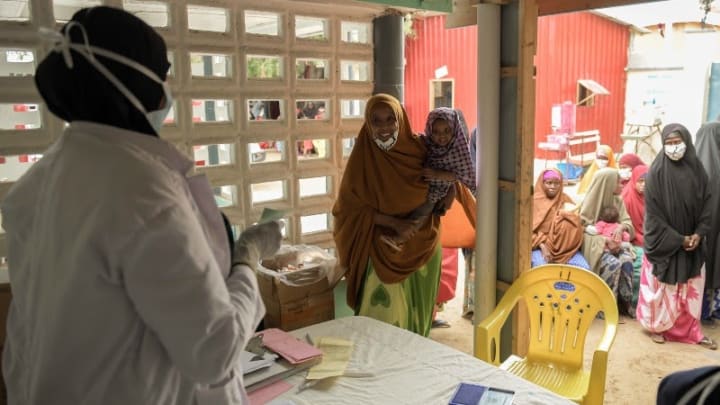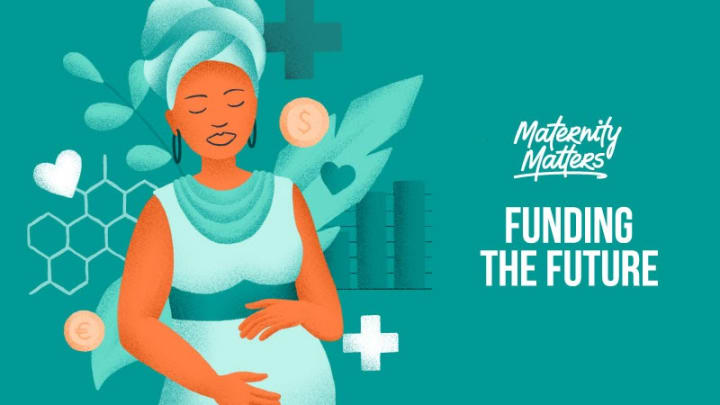
When it comes to the role of the private sector in health system strengthening, the World Health Organization sees it as key, especially in terms of service delivery, according to Dr. Anshu Banerjee, WHO’s director for the department of maternal, newborn, child, and adolescent health, and ageing.
The COVID-19 pandemic has put a strain on health systems and highlighted the lack of resources that often jeopardize basic services such as maternal health. This has helped to shine a spotlight on the role local private sector providers — whether community pharmacies, private clinics, or midwives — can play within wider health systems.
“Many country health systems are mixed systems [private and public], whereby service delivery is either outsourced or by capitation and there are many kinds of systems that allow the private sector to be involved and to implement government policies and programs on behalf of the government with the ministry of health,” Banerjee explained, adding that COVID-19 has brought with it lessons about engaging the private sector from a universal health coverage perspective.
Speaking to Devex, Banerjee shared the lessons, explained how WHO engages the private sector, and how it tracks private sector engagement in the reproductive, maternal, newborn, child, and adolescent health space.
This conversation has been edited for length and clarity.
A lot of reproductive health services in low- and middle-income countries are delivered by local private providers. How is WHO looking at this part of the health system to help in achieving reproductive health targets under SDG 3?
As defined by OECD, this is an activity that aims to engage the private sector for development results, which involve the active participation of the private sector. The definition is deliberately broad in order to capture all modalities for engaging the private sector in development cooperation from informal collaborations to more formalized partnerships.
To read more about the definition and how Maternity Matters: Funding the Future is exploring the topic, click here.
In a number of countries, there are agreements with the faith-based organizations to deliver services. For example, when I was working in Malawi, about a third of the health centers were from the Christian Health Association of Malawi. They had an overarching agreement with the government to provide services. We also had a local NGO that was providing family planning services nationally and this increased the availability of services, so we do see value in partnership.
With the NGO that was providing family providing services, we had quite a lot of interaction between the district health services management and that particular NGO so I do think that engagement — whether it’s private providers that are for profit or not-for-profit — is part of our overall service delivery systems.
Are there lessons COVID-19 is teaching us that could inform how the private sector should be viewed from a UHC perspective?
One thing we’ve learned in the last six months is that where maybe initially people felt that we couldn't have made this digital leap, it was actually possible. We can reach people in more ways, in different ways and we need to build on what we’ve learned from the COVID-19 period. This will also apply to the private sector.
I think the private sector has learned how to remain functional — or as functional as possible — and has moved a lot to digital solutions. This is an area where we need to work together in order to maximize some of the gains: on how to work together, how to reach people, look at what really needs to be provided offline, and what could be replaced through an online service platform in reaching people and provide support more easily.
[One example is] Sustaining Health Outcomes through the Private Sector plus USAID’s flagship initiative in private sector health, developed an e-pharmacy model that delivers drugs to patients’ doorsteps in India.
How does transparency in investments help improve health system strengthening and outcomes?
Transparency is key because that allows us really to learn the lessons. For example, one of the things WHO has done is to ask countries to sign up to particular clinical trials and provide data for those clinical trials so that people use comparable information from different countries. That [means], once we have the results, it can really be shown that it’s based on different inputs from different countries. People are given the same information and feedback so the results will be as transparent as possible.
I think that for anything we do, transparency is going to be very important for us to be able to learn lessons and share lessons — both on what works and what doesn’t work.
How are you tracking WHO’s engagement with the private sector in the area of RMNCAH?
We have a very transparent process whereby our program budget is approved by our member states, we highlight what we’re going to deliver, we report back midterm, and at the end of the two years, we report back on what we’ve achieved to member states. From that respect, what WHO does is a very transparent process.
Now, together with the Partnership for Maternal, Newborn and Child Health for example, there’s a larger tracking exercise on commitments that have been made by governments towards the Global Strategy for Women's, Children's and Adolescent's Health 2016-2030 and whether those commitments are being held. That is a different tracking process around investments as part of the Every Woman, Every Child commitment process.
Devex and MSD for Mothers co-hosted a virtual roundtable earlier this year to discuss the role of local private sector solutions to deliver care in LMICs both during COVID-19 and in a post-pandemic landscape. Catch up on the event.
The Funding the Future series is supported by funding from MSD, through its MSD for Mothers program and is the sole responsibility of the authors. MSD for Mothers is an initiative of Merck & Co., Inc., Kenilworth, NJ, U.S.A.





